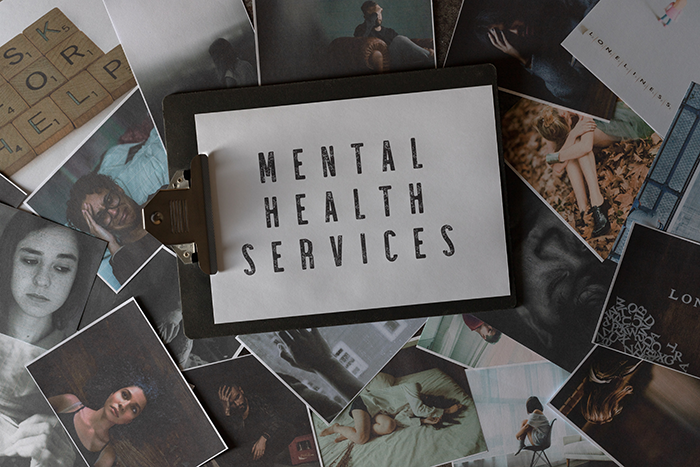The COVID-19 pandemic has had a significant impact on college students’ mental health and wellbeing. Students across the globe have had to navigate endlessly changing environments at school and work, manage isolation from friends and family, as well as cope with anxiety and depression.
Overall, this has contributed to poor mental health when compared to pre-pandemic levels. In fact, conditions like depression, alcohol use disorder, bulimia nervosa/binge-eating disorder, and comorbidity were all higher than pre-pandemic levels.1
This downward trend in students’ mental health can be better understood when looking at some key data points from the 2022 Inside Higher Ed/College Pulse Current State of Mental Health Survey:2
- The top 3 mental health challenges experienced were – anxiety (75%), depression (60%), and disordered eating (27%)
- 56 percent of students noted their current mental health was fair (34%) or poor (22%) – only 9% rated it as excellent
- 4% of students noted they rely on their college counseling center for emotional and mental support – friends and direct family were the top answers at 57% and 49%, respectively.
- 17% of students used tele-counseling during the pandemic
- 14% of students say their mental health got worse at the beginning of the pandemic and stayed that way
Further, when looking at trends among students who sought professional help, they often had diagnoses that led to therapies that included psychotropic medications.
“We’re hearing from our partners and seeing it in our internal data that the student population is under a lot of pressure,” said Wellfleet Director of Clinical Programs, Jennifer Stevens. “In fact, in the last year, we’ve seen a nearly 40 percent increase in prescriptions for behavioral health indications, including depression, attention disorders and anxiety.”
Lack of understanding leads to lack of care
According to the National Institute of Mental Health (NIMH), 1 in 5 American adults struggle with a mental health condition, however less than half receive treatment.3 Further research from NIMH highlights this to be true for the college student population. With 55 percent of students foregoing behavioral health services in favor of ‘solving one’s own problems’.4
While it is encouraging that some students are seeking care options, many forgo getting the assistance they need.
Why aren’t they seeking it out?
A major reason students are not seeking help starts with education. When it comes to behavioral healthcare for students, there is a lack of awareness of providers roles, and confusion on what to consider when selecting a provider.
According to MDLive research, among individuals open to using behavioral health services, only 40% understand what a therapist offers and only 39% understand the role of a psychologist. Further, this confusion exists even among those who have had behavioral health care services in the past – where only 50% report understanding the role of a psychologist.5 While there are pronounced differences between the two, Healthline provides a helpful high-level for each; see below.

Other common reasons why many college-aged people do not seek behavioral health services include:
- Privacy concerns
- Stigma associated with seeking professional help
- Lack of time
- High perceived cost
- Preference to seek support from friends and family4
How can colleges help their student population feel comfortable seeking behavioral health care?
There are many ways that colleges and universities can help reduce the confusion and stigma around seeking help for behavioral health conditions. Getting students comfortable can start with three simple steps:
- Help remove the stigma associated with behavioral healthcare
While it is up to the student to be comfortable with reaching out for help, it’s important that the institution provide a nurturing environment that makes them feel supported and celebrates one’s journey in seeking care. Regularly provide them with positive messaging around behavioral health, and train faculty and staff on how to engage and direct students to proper care. - Provide educational resources
It is hard to get from point A to point B without a map. Providing resources across campus, on school websites, social, and applications helps ensure students can self-serve and confidently take the next steps receiving care. Student healthcare providers like Wellfleet can help with providing those resources. - Offer multiple ways to receive care
There is no one-size-fits-all solution. So, be sure there are plenty of options for the students – including on- and off-campus counseling, telehealth options, and 24/7 hotlines, like CareConnect. Having multiple options can help students be confident in their ability to receive care on their terms. Further, programs like the Complete Behavioral Health Solution can help reduce staff’s efforts, while improving access to care for students in need.
Did you know that domestic students are not alone when it comes to dismissing behavioral health care? Find out why international students are more likely to need behavioral health support, but less likely to seek it out when compared to their domestic counterparts.
Citations
1 Kim, H., Rackoff, G., Fitzsimmons-Craft, E., et, al. (2021, June 19) College Mental Health Before and During the COVID-19 Pandemic: Results from a Nationwide Survey. Retrieved on May 4, 2022, from https://link.springer.com/article/10.1007/s10608-021-10241-5.
2 Inside Higher Ed. (2022). Current State of Mental Health Survey. Retrieved on May 4, 2022, from https://reports.collegepulse.com/current-state-of-mental-health.
3 National Institute of Mental Health. (n.d.). Mental Illness. Retrieved on May 4, 2022, from https://www.nimh.nih.gov/health/statistics/mental-illness.
4 Czyz, E.K., Horwitz, A.G., et al. (2014, October 1). Self-reported Barriers to Professional Help Seeking Among College Students at Elevated Risk for Suicide. Retrieved on May 4, 2022, from https://www.ncbi.nlm.nih.gov/pmc/articles/PMC3788673/#:~:text=Preference%20for%20solving%20one’s%20own,nearly%2055%25%20of%20student%20endorsement.
5 Zelis, C. (2022, February 17). Getting Started is Biggest Barrier for Individuals to Get Behavioral Health Care. Retrieved on May 4, 2022, from https://www.evernorth.com/articles/break-down-barriers-to-behavioral-health-services.
Son, C., Hedge, S., Smith, A., Wang, X., Sasangohar, F. (2020 September). Effects of COVID-19 on College Students’ Mental Health in the United States: Interview Survey Study. Retrieved on May 4, 2022, from https://www.jmir.org/2020/9/e21279.





